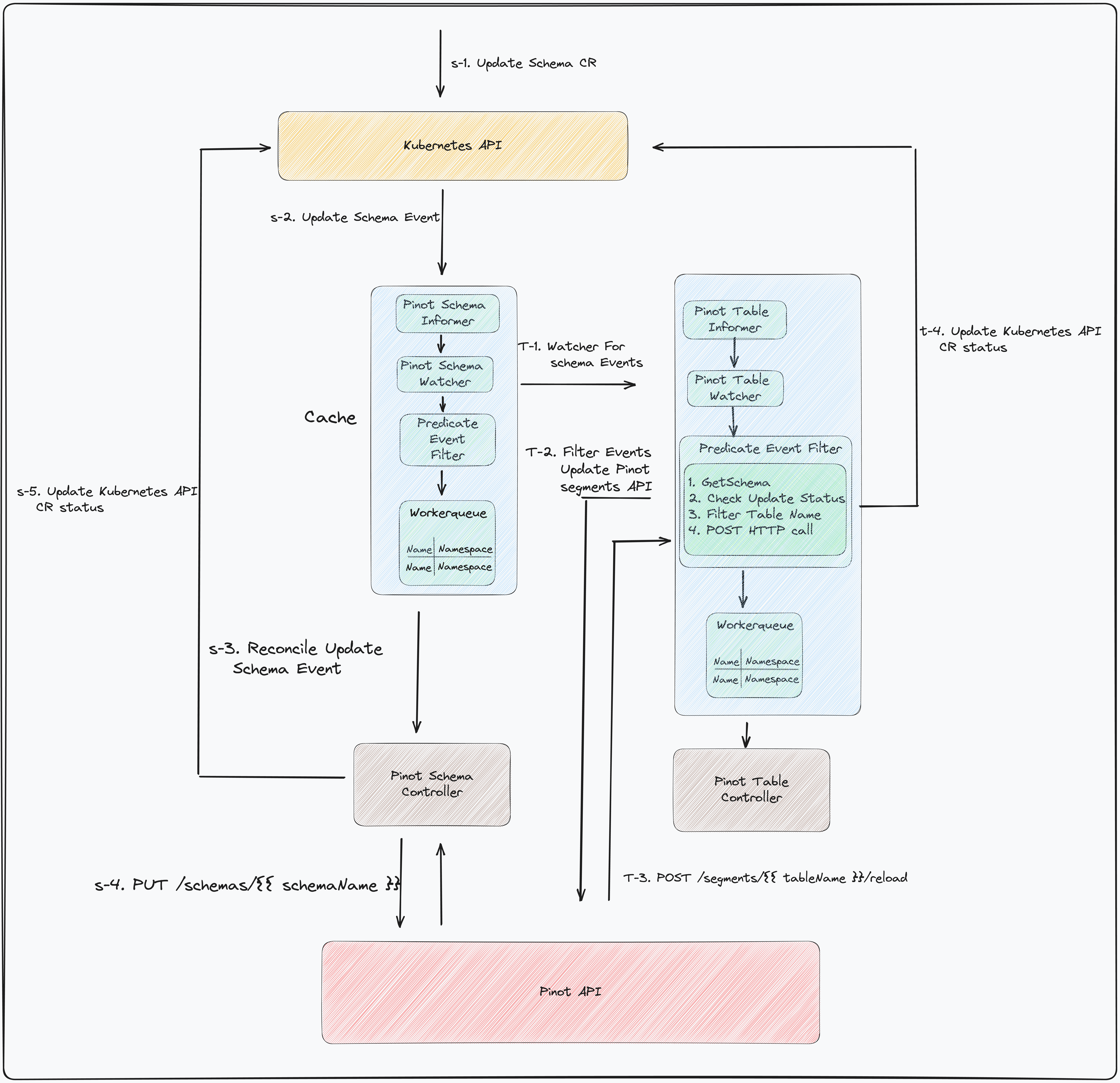Learn how to install Pinot Control Plane on Kubernetes, configure your first Pinot cluster, and dive into the control plane features.
Introduction
We believe that Kubernetes can serve as a control plane for any application, including those with data and stateful sets. While Helm charts are useful for configuration management, they don't maintain the state of the application. That's why we've built a control plane based on the Kubernetes operator pattern that acts as a bridge between your application's requirements and Kubernetes infrastructure.
Why Control Plane for Pinot ?
Pinot control plane for k8s is specifically designed to improve the user experience of running Apache Pinot clusters. As a distributed database, Pinot can be challenging to run on Kubernetes without the right tools. Our project is based on the DSOI Spec and built using the Operator-Runtime library to provide a more user-friendly and Kubernetes-friendly experience.
